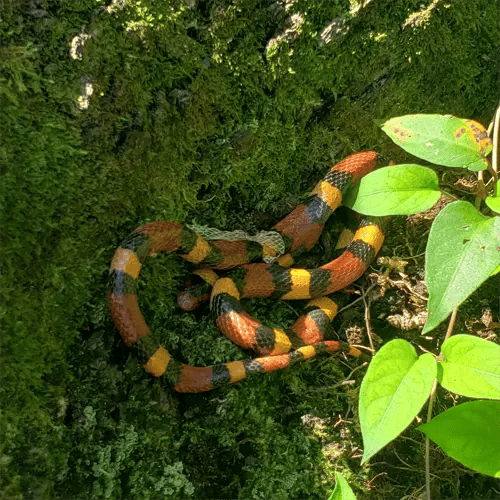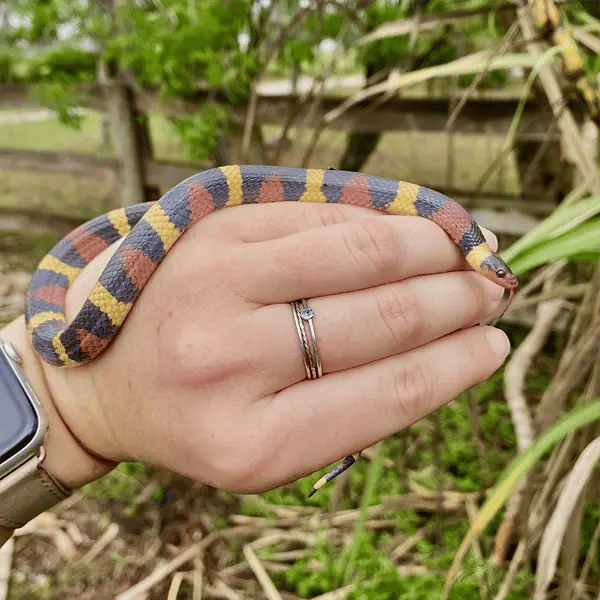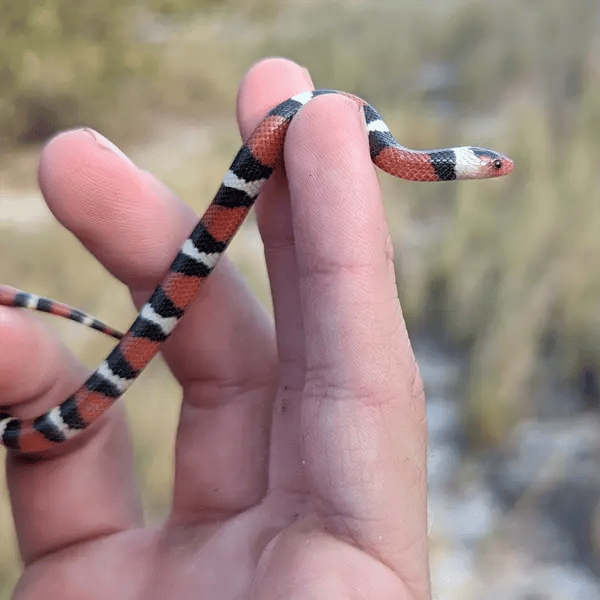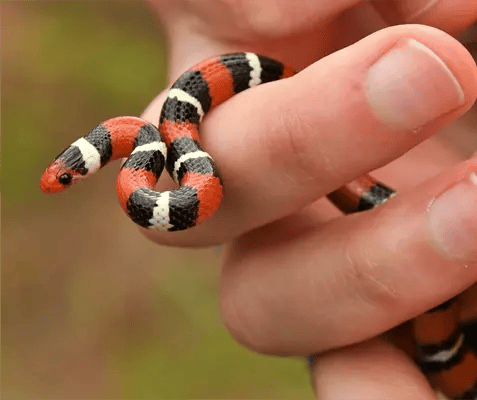Scarlet Kingsnakes in Central Florida
The Scarlet Kingsnake (Lampropeltis elapsoides) is a non-venomous colubrid species indigenous to the southeastern United States, including central Florida. This slender yet powerful constrictor is appreciated by many for its vibrant coloration and valued role in controlling pest rodents.
This guide provides detailed identification tips, biology facts, and information on scarlet kingsnake habits, reproduction, diet, and human interactions in central Florida.
Appearance and Identification
Scarlet kingsnakes can be identified by their smooth and glossy scales, colorful banding patterns, and other distinctive features
Scarlet kingsnakes can be confused with the venomous coral snake and juvenile milksnake. Proper identification of banding patterns and head shape helps distinguish the harmless scarlet kingsnake.
Maturation Rate
Young scarlet kingsnakes mature quickly in Florida’s warm climate. Hatchlings average 8 to 13 inches long and sexual maturity is reached by 24 to 36 months old. They gain most of their adult length within the first 3 years.
Habits and Behavior
Scarlet kingsnakes are mostly active during the day and crepuscular periods. They can often be observed basking in the early morning. Secretive and fossorial, they spend much time buried underground or hiding beneath surface debris. When threatened, scarlet kingsnakes may vibrate their tails and release a foul-smelling musk from their cloaca.
Scarlet kingsnakes inhabit a range of ecosystems in Florida including pine flatwoods, scrub, upland hardwood forests, and human-altered environments. They seek shelter under boards, logs, and leaf litter. Inside homes, they may be found in crawl spaces, garages, and sheds.
Reproduction and Lifespan
Scarlet kingsnakes reach sexual maturity by 2 to 3 years old. They are oviparous, with females laying 3 to 12 eggs in May through July. The eggs hatch around 60 days later from August to September. Hatchlings grow rapidly and are independent immediately.
Lifespans in the wild average 6 to 8 years. Scarlet kingsnakes may live over 20 years in captivity.
Ideal Habitat and Range
Central Florida’s humid subtropical climate with mild winters provides excellent habitat for scarlet kingsnakes. Average annual temperatures range from the low 70sF (22C) in the north to the upper 70sF (25C) in southern regions. Summer brings highs in the 90sF (30sC). Rainfall totals 50+ inches (1270+ mm) per year.
Abundant vegetation, wooded areas, and human structures offer shelter. Ample prey like lizards, rodents, birds, eggs, and other snakes provide nutrition for growth and reproduction. Scarlet kingsnakes thrive in Florida’s warm, moist environment.
Diet and Feeding
Scarlet kingsnakes are carnivorous and consume a varied diet of small vertebrates. Hatchlings start by feeding on lizards and progress to small mice and other prey. Adults eat:
- Lizards – anoles, skinks, geckos
- Small snakes – ringneck snakes, wormsnakes
- Rodents – mice, rats, voles
- Bird eggs and nestlings
- Frogs and toads
Scarlet kingsnakes are opportunistic foragers. They find prey using chemical cues detected by flicking their forked tongues. Prey is constricted to suffocation before swallowing whole. Smaller prey may be pinned down while swallowing. Scarlet kingsnakes can go weeks between feedings.
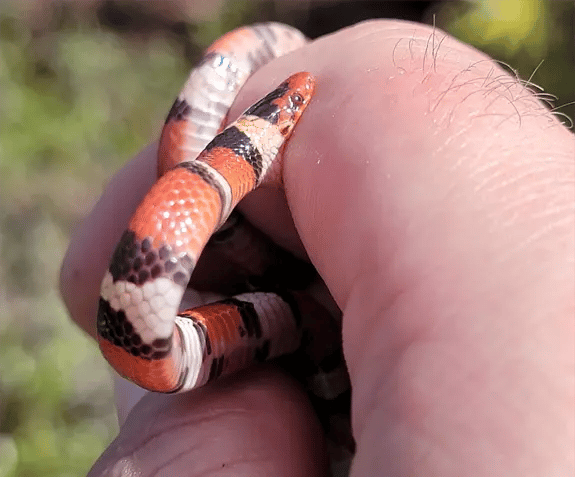
Photo 256492135 © Wayne Fidler, CC BY-NC

Common Health Risks
Though non-venomous, scarlet kingsnakes can bite in self-defense if threatened. The small, rear-facing teeth may cause minor punctures or scratches. Any bite should be thoroughly washed to avoid infection.
Like many reptiles, scarlet kingsnakes may harbor Salmonella bacteria. Proper handwashing after handling snakes prevents potential salmonellosis infection. Overall, scarlet kingsnakes pose minimal health risks to humans.
Preventing Scarlet Kingsnakes
The primary method to deter scarlet kingsnakes is exclusion by sealing potential entry points into homes and structures. Closing gaps in foundations and openings around pipes prevents access. Kingsnakes may enter under poorly fitted doors. Keeping garage and shed doors closed also limits shelter sites.
Trimming vegetation and clearing clutter reduces suitable habitat around the home. Removing sources of food like pet foods and rodents through sanitation helps deter kingsnakes. Glue boards and live traps can remove individual snakes found indoors.
Photo 260473888 © Joe Girgente, CC BY-NC
Scarlet Kingsnakes in Central Florida – Conclusion
In summary, the scarlet kingsnake is a unique and beneficial reptile native to Central Florida environments. Their vibrant coloration and rodent-eating habits make them an attractive backyard resident. With proper identification and exclusion methods, kingsnakes can be deterred from entering homes.
If encountered, scarlet kingsnakes should be safely removed and released outside unharmed. Their important ecological role makes coexistence with kingsnakes through prevention and tolerance a goal.

